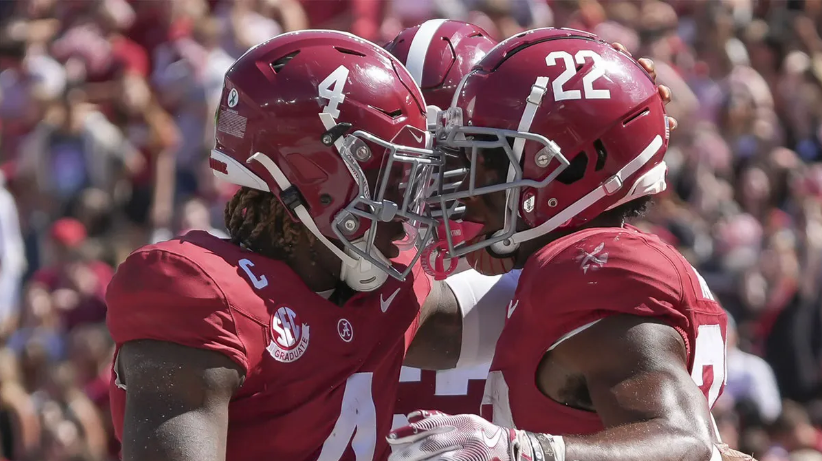
Alabama hasn’t passed the eye test since they knocked off Georgia.
Alabama football was on a high after defeating Georgia in Week 5, with Kalen DeBoer and his team clinching the No. 1 spot in the AP polls. It seemed like the Crimson Tide had seamlessly transitioned away from Nick Saban.
However, the road hasn’t been smooth for Alabama. Following the significant win against their rivals, the team quickly faced challenges. In Week 6, Alabama was unexpectedly defeated by Vanderbilt in one of the season’s biggest upsets, and they narrowly avoided another upset against South Carolina on Saturday in Tuscaloosa.
Had South Carolina quarterback LaNorris Sellers not thrown an errant pass on a two-point conversion and if a late-game interception hadn’t occurred following a successful onside kick, the conversation around the Crimson Tide might have been much more alarming. Nonetheless, Alabama remains in a decent position at 5-1 this season, although there are several areas of concern.
Offensive Line: Adequate, but Not Exceptional
To be clear, Alabama’s offensive line performs adequately, but it lacks the dominant physicality typically seen in Tuscaloosa. This discrepancy is significant when distinguishing between contenders in the SEC and evaluating who can vie for a National Championship.
Currently, Alabama ranks 26th in pass blocking and 70th in run blocking, according to PFF, which presents exploitable weaknesses for the top teams in the nation. The running game has faced issues, with the Crimson Tide sitting at 51st in the country in rushing yards per game (179.2) as they head into Week 8. This was particularly problematic against South Carolina, where DeBoer’s offense managed only 104 yards on 38 attempts, averaging a mere 2.7 yards per carry.
When the running game falters, Alabama’s passing attack struggles to compensate unless they connect on difficult 50-50 balls outside. Ryan Williams has emerged as a valuable deep threat, but relying on that strategy is not a viable long-term solution. Although Jalen Milroe has made progress as a passer, he hasn’t reached the level where he can effectively dismantle defenses without support from the running game.
Secondary Vulnerabilities
The Alabama secondary has become a weak point for the team, and opponents have taken advantage of it in recent weeks. The Crimson Tide lost its top three defensive backs from last season, with standout safety Caleb Downs transferring to Ohio State and starting cornerbacks Terrion Arnold and Kool-Aid McKinstry declaring for the NFL Draft.
In their absence, Alabama has fielded a very young secondary, with many players lacking experience together. Cornerback Zabien Brown is a true freshman, while fellow corner Junior Domani Jackson is in his first year in Tuscaloosa after transferring from USC. Safety Keon Sabb, another transfer, is just a redshirt sophomore, meaning this group is still forming chemistry. The most experienced member, Malachi Moore, has struggled in recent weeks and has made some unusual mistakes.
The secondary was particularly exposed during the second half of Alabama’s victory over Georgia, where the Bulldogs rallied from a 28-0 deficit. Quarterback Carson Beck completed seven passes of over 20 yards during Georgia’s comeback attempt, highlighting Alabama’s vulnerability in the air. This issue reappeared against South Carolina when wide receiver Nyck Harbor caught a 31-yard touchdown pass, putting the Gamecocks in a position to potentially tie the game with a two-point conversion in the final minute.
This group is undoubtedly talented—just look at Brown and Jackson’s game-winning interceptions against Georgia and South Carolina, respectively—but they will continue to face challenges from the top teams on their schedule.
Penalties Continue to Haunt Alabama
Alabama is consistently undermining itself with penalties, a recurring issue that also surfaced late in Nick Saban’s tenure. Over the first seven weeks, the Crimson Tide has averaged nearly eight penalties per game, placing them 119th out of 134 FBS teams.
This was a crucial factor in their game against Georgia, where Alabama was flagged for 10 penalties resulting in a loss of 90 yards. In all six games this season, they’ve accumulated at least as many penalties as their opponents, suffering from greater penalty yardage in each case. This pattern must change if they hope to achieve their goals this season.
The types of penalties are varied. The secondary often commits holding violations, they struggle with procedural penalties, and they occasionally display a lack of discipline with post-snap personal fouls. The root cause of these issues remains unclear, but they have been a significant problem this season.

Leave a Reply